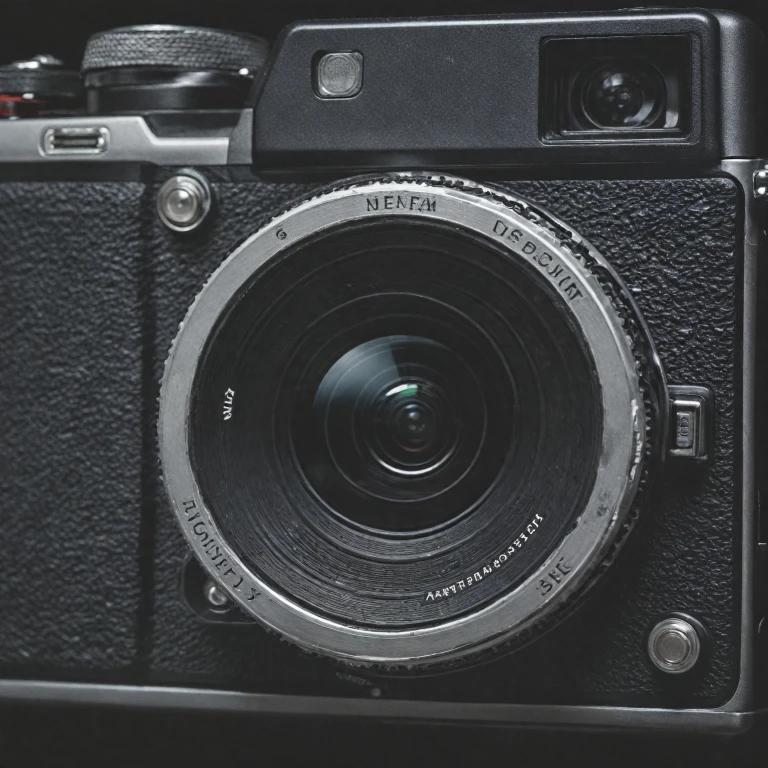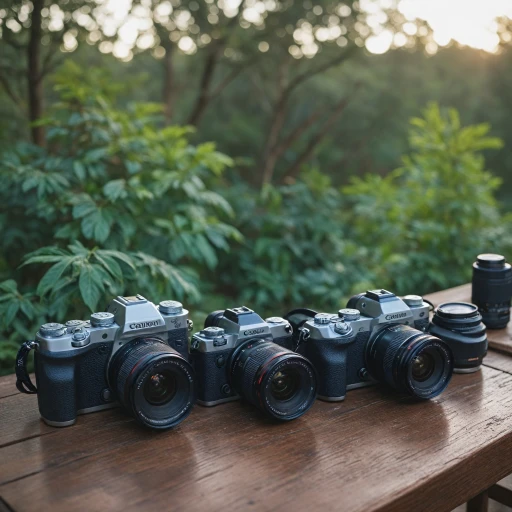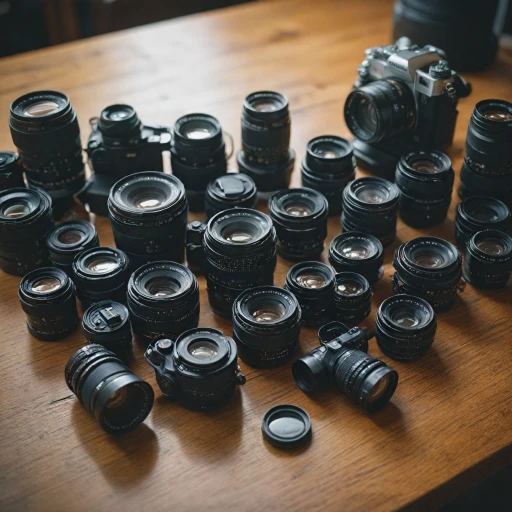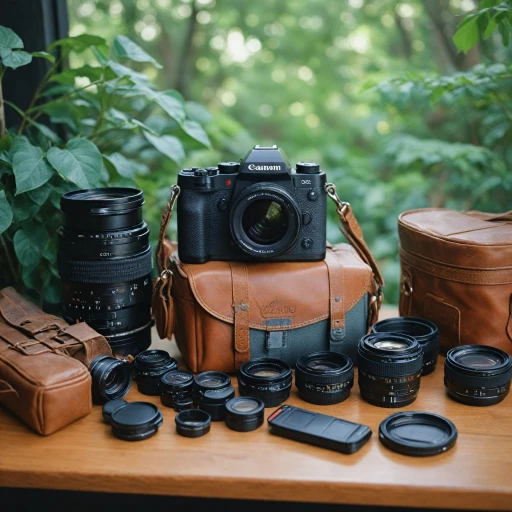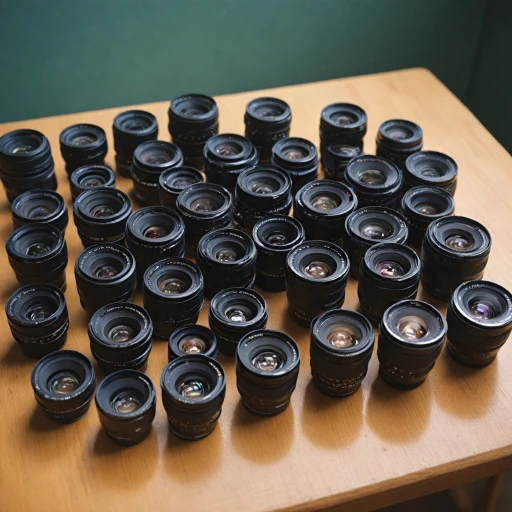
What is a Whitepoint Housing Lens?
Discovering Whitepoint Housing Lenses for Digital Cameras
Whitepoint housing lenses are an intriguing option for photographers seeking to enhance their image quality and refine their photography skills. Understanding what these lenses are and how they can benefit your photography is an important first step if you're considering an upgrade. Whitepoint housing lenses, often referred to as whitepoint optics, are specifically engineered to optimize the white balance in digital cameras. White balance is crucial in photography as it helps capture colors accurately, ensuring that the warmer and cooler tones in your images appear as natural as they do to the naked eye. The technology behind whitepoint lenses involves a process of meticulous rehousing, where vintage lens elements are integrated into modern cinema or cine lenses. This process preserves the timeless appeal of vintage lenses while offering the durability and precision of contemporary optics, making them a favorite among professionals in Helsinki, Finland and beyond. The materials used, such as stainless steel, contribute to their longevity and reliability. One of the unique aspects of whitepoint housing lenses is their compatibility with a wide range of cameras, whether you’re working with Canon, Zeiss Super Speed, or any other high-quality lens set. Their versatility extends across different shooting conditions, making them an essential component in your camera accessories collection. Choosing the right lens involves considering various factors such as the front diameter and overall optic quality. It's essential to base your decision on the type of photography you will be engaging in, such as video production or still photography. For anyone embarking on a wedding photography project, understanding the nuances of each lens can help tailor your setup to specific needs. For more insights on selecting the perfect lens, visit this comprehensive guide. In conclusion, the flexibility and precision offered by whitepoint housing lenses make them a compelling choice for photographers aiming to push the boundaries of their image quality. Whether you’re seeking to maintain the charm of vintage optics or want to leverage modern advancements, these lenses offer a remarkable blend of past and future technologies.The Importance of White Balance in Photography
The Significance of Maintaining Accurate Color Balance
In digital photography, the importance of white balance cannot be overstated. Accurate white balance ensures that the colors in your photos appear as they do in real life, maintaining the quality and authenticity of the images. When a digital camera captures an image, it needs to accurately interpret the colors relative to the light source. This is where whitepoint housing lenses step into the picture. By using such lenses, photographers can minimize the color casts that light sources can impart on an image, leading to enhanced image quality. These precision optics are engineered to aid in achieving the correct white point, which is crucial for high-quality photography. Often integrated with modern cinema cameras and vintage lens setups, whitepoint housing lenses play a pivotal role in maintaining the balance between bright whites and deep shadows, ensuring that each photo tells a true-to-life story through accurate colors. For those involved in meticulous visuals, such as cine lenses, optics rehoused with precision craft materials like stainless steel, these accessories provide the necessary leverage for color fidelity. Ensuring your camera accessories meet the specific demands of the white balance process can be the difference between an average photo and a masterpiece. Additionally, with brands like Canon and Zeiss developing super speed optics, capturing natural colors becomes even more attainable. While the role of whitepoint housing lenses in maintaining color balance cannot be underestimated, the process of choosing and integrating these lens setups can be daunting. Whether you're using them in a professional setting or for personal photography projects, it's paramount to understand how these elements fit into your overall setup. And remember, for any enthusiast looking to delve deeper into camera know-how, exploring an essential tool kit can greatly enhance your understanding and capabilities. Adhering to correct processes, regular contact with manufacturers for support, and following shipping and return instructions will ensure that your investment in these high-quality optics continues to pay off over time. Whether you're crafting narrative through stills in Helsinki, Finland, or capturing dynamic settings, the importance of precision in your optics remains universally significant.How Whitepoint Housing Lenses Enhance Image Quality
Elevating Image Quality with Whitepoint Housing Lenses
Whitepoint housing lenses, known for their advanced optics, play a significant role in enhancing the overall image quality of digital cameras. As any photography enthusiast would tell you, image quality is paramount when capturing moments that last a lifetime. The marriage of art and science is evident in the rehousing process, where lenses are refitted into a new, often improved, housing. This gives photographers the chance to achieve the perfect shot with higher precision and detail. The lenses used in modern cinema, including the renowned zeiss super and super speed cine lenses, are tailored to require specific housing considerations for optimal image capture. This ensures colors are vivid, shadows are defined, and clarity is achieved—traits highly valued in both vintage and contemporary lenses. Moreover, the advancements in optics have led to reductions in chromatic aberrations and enhancements in contrast ratios. These improvements are crucial when considering white balance; they provide photographers with the flexibility to adjust exposure and light conditions without compromising the integrity of their images. In addition to optics, the technology behind whitepoint optics ensures that the housing materials, such as stainless steel, are durable and capable of withstanding various shooting conditions. The impact of these materials is especially notable in extreme environments, from the studios in Helsinki Finland to the sunlit beaches around the world. For photographers eager to improve their craft, understanding the role of camera accessories including expertly rehoused lenses is a step in the right direction. The process of rehousing, while exacting, rewards those who follow instructions carefully with lenses that offer superior performance and longevity. Navigating the complexities of lens selection can be challenging. For those interested in enhancing their gear, exploring the potential of a 3-point slinger for your camera can greatly complement the use of whitepoint housing lenses, contributing to the creation of stunning, high-quality images.Choosing the Right Whitepoint Housing Lens for Your Needs
Selecting the Ideal Lens to Enhance Your Photography
Understanding how to choose the right Whitepoint Housing Lens can significantly impact the outcome of your photographic projects. With numerous options on the market, it's essential to consider several factors to ensure you make an informed decision about your optics.- Lens Compatibility & Camera Type: Ensure that the lens you select is fully compatible with your camera and meets the specific needs of your setup. For instance, pairing a Whitepoint lens with a Canon camera or using high-quality cine lenses can vastly affect the resulting image quality.
- Intended Use: Consider your primary shooting conditions. Whether you're looking for modern cinema capabilities with lenses rehoused for cinematic effects or cine lenses for video projects, assess how these fit into your creative vision.
- Optical Quality: Prioritize lenses based on their image quality. Look for terms like "super speed," "zeiss super," and "high quality" to find optics designed to produce sharp, clear images.
- Physical Attributes: Check the front diameter and material—such as stainless steel housing—for durability and longevity, especially if you’re looking at vintage lens rehousing or other specialty optics options.
- Customer Service and Policies: Evaluate the company's reputation based on factors like shipping processes, return policies, and contact options. For instance, companies in Helsinki, Finland, known for their high standards, often provide excellent service. Be sure to read their privacy policy and ensure that they provide ample customer support methods, such as email protection and app accessibility.
- Color & Time-Saving Features: Some lenses offer advanced color settings and Whitepoint features that enhance your workflow. These are especially beneficial if your projects require precise color correction and minimal time investments.
Common Challenges with Whitepoint Housing Lenses
Challenges You Might Face with Whitepoint Housing Lenses
When delving into the world of Whitepoint Housing Lenses, enthusiasts and professionals alike might encounter several challenges. Here's an overview of some common obstacles:- Compatibility Issues: Not every camera is immediately compatible with these lenses. Properly matching your camera to the correct Whitepoint Housing Lens is essential. It often requires attention to details like the front diameter and the specific optics used.
- Installation and Rehousing Process: The rehousing procedure can be daunting. It might involve significant time investment to ensure the lens is correctly set and to achieve optimal image quality. As these lenses involve sophisticated optics, following instructions carefully is crucial.
- Shipping and Contact Needs: When sourcing your lenses, important logistical elements must be considered. Whether you are seeking specialized lens sets or vintage options, aspects like shipping times and reliable contact points such as email addresses are critical.
- Color Consistency: Ensuring consistent color reproduction is vital for high-quality outcomes. While Whitepoint Housing Lenses can enhance image quality, they might also require additional white balance adjustments to maintain color integrity.
- Maintenance and Quality Assurance: Maintaining the high quality of your lenses means regular checks, especially if you are using them frequently in rough conditions. Stainless steel housings offer durability, but regular maintenance helps extend the lifecycle.
Future Trends in Whitepoint Housing Lens Technology
Emerging Directions in Whitepoint Housing Lens Development
The field of digital photography is continually evolving, and the same holds true for the technology surrounding whitepoint housing lenses. As photographers and cinematographers demand higher image quality, efforts to advance lens technology are at the forefront.
One key trend is the emphasis on high-quality optics that enhance color accuracy and sharpness, crucial for modern cinema and high-resolution photography. Manufacturers based in different parts of the world, including Helsinki, Finland, are pushing the boundaries, incorporating innovative materials like stainless steel to improve durability and light refraction.
Whitepoint optics are known for their ability to offer exceptional control over white balance, making them invaluable in creating consistent and reliable color representation—an essential factor for both vintage aesthetics and cutting-edge digital visuals. The rehousing process, which involves adapting existing lens designs to incorporate new technology, is a trend that continues to gain momentum. For instance, lenses rehoused with contemporary elements without sacrificing that timeless quality are in high demand.
- Technological Enhancements: Expect advancements in sensors and app-based controls that provide more intuitive interfaces for adjusting white balance manually or automatically.
- Customization: Photography enthusiasts might soon see more customizable options, allowing for adjustments in front diameter and cine lenses adoption for seamless integration into different camera systems like Canon or SSC.
- Environmental Adaptability: As more photographers focus on environmental themes, lens setups with enhanced resistance to diverse climates and lighting conditions are emerging.
For those seeking specialized lenses for cine or personal use, staying updated with industry trends through platforms like Facebook or Instagram could provide real-time information. Following instructions from manufacturers’ privacy policies and contacting companies about new releases can also offer insights into the latest offerings, ensuring you’re equipped with the best tools to advance your craft.
